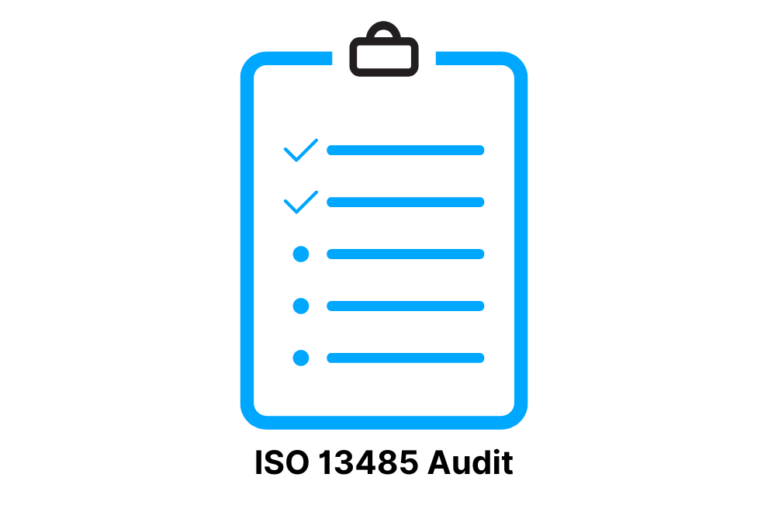CGMP: What It Is, Why It Matters, and How to Comply
The pharmaceutical industry is one of the most regulated and scrutinized sectors in the world.
The quality and safety of pharmaceutical products are vital for protecting and promoting public health, as well as for ensuring consumer trust and confidence.
However, achieving and maintaining high standards of quality and safety is not an easy task.
It requires a comprehensive and systematic approach to design, monitor, and control all aspects of the manufacturing process and facilities.
This is where CGMP comes in. CGMP stands for Current Good Manufacturing Practice.
It is a set of regulations enforced by the Food and Drug Administration (FDA) and other regulatory agencies around the world that specify the minimum requirements that pharmaceutical manufacturers must follow to ensure that their products are safe, effective, and of high quality.
CGMP covers all stages of the product life cycle, from the selection and testing of raw materials to the production and packaging operations to the testing and release of final products.
In this article, we will explain what CGMP is, why it is important, and how to comply with it.
We will also discuss some of the challenges and opportunities that CGMP presents for the pharmaceutical industry in the 21st century.
What is CGMP?
CGMP is based on sound scientific principles and best practices that are applicable to all types of pharmaceutical products, regardless of their dosage forms, routes of administration, or sources of ingredients.
CGMP also allows manufacturers to use modern technologies and innovative approaches to achieve continuous improvement and excellence in their products while adhering to GMP standards.
CGMP consists of several key elements that manufacturers must implement in their operations, including laboratory controls, process controls, and a master formula. Some of these elements are:
Quality Management System:
A quality management system (QMS) is a formalized system that documents the policies, procedures, responsibilities, and activities that ensure quality objectives are met. A QMS defines how an organization plans, implements, monitors, evaluates, and improves its processes to achieve quality outcomes.
Quality Risk Management:
Quality risk management (QRM) is a systematic process for identifying, assessing, controlling, communicating, and reviewing risks associated with quality throughout the product life cycle. QRM helps manufacturers make informed decisions based on scientific evidence and risk-benefit analysis.
Validation:
Validation is a process of establishing documented evidence that a system, process, equipment, or method performs consistently and reliably according to predetermined specifications and quality attributes. Validation ensures that products meet their intended use and specifications.
Change Control:
Change control is a process of managing any changes that may affect the quality of a product or process. Change control ensures that changes are evaluated for their impact on quality, safety, efficacy, regulatory compliance, and traceability before they are implemented.
Documentation:
Documentation is a process of recording all information related to the design, development, manufacturing, testing, distribution, and use of a product or process. Documentation provides evidence of compliance with CGMP requirements and facilitates traceability and accountability.
CGMP guidelines are not static but dynamic. It evolves with the advancement of science, technology, and industry practices.
The “C” in CGMP stands for “current”, requiring manufacturers to use technologies and systems that are up-to-date in order to comply with the current standards and regulations.
Systems and equipment that may have been “top-of-the-line” to prevent contamination, mix-ups, and errors 10 or 20 years ago may be less than adequate by today’s standards.
CGMP is not the only regulatory requirement for pharmaceutical products.
There are also other parts of the Code of Federal Regulations (CFR) that specify the conditions for approval, labeling, reporting, and inspection of pharmaceutical products, including on the basis of parts of the title. For example:
- Part 314: Applications for FDA Approval to Market a New Drug
- Part 601: Licensing of Biological Products
- Part 610: General Biological Products Standards
- Part 660: Additional Standards for Viral Vaccines
- Part 201: Labeling
- Part 207: Registration of Producers of Drugs and Listing of Drugs in Commercial Distribution
- Part 310: New Drugs
- Part 312: Investigational New Drug Application
- Part 314: Applications for FDA Approval to Market a New Drug
- Part 316: Orphan Drugs
- Part 320: Bioavailability and Bioequivalence Requirements
- Part 600: Biological Products: General
- Part 606: Current Good Manufacturing Practice for Blood and Blood Components
- Part 820: Quality System Regulation
These regulations, as outlined in CFR Part, are designed to ensure that pharmaceutical products meet the minimum standard of safety, efficacy, and quality throughout their life cycle.
Federal food regulations play a crucial role in ensuring that pharmaceutical products are safe and effective for consumers.
Why is CGMP important?
CGMP is important for protecting and promoting public health, as consumers cannot easily detect the quality of pharmaceutical products by themselves.
Poor quality products can cause serious harm or even death to consumers, as well as undermine their trust and confidence in the health care system.
For example, in 2012, a fungal meningitis outbreak caused by contaminated injectable steroids from a compounding pharmacy killed 64 people and sickened hundreds more in the US.
Ensuring CGMP compliance is crucial for patient safety and preventing such tragedies from occurring.
FDA monitors and inspects pharmaceutical manufacturers’ compliance with CGMP and takes action against those who violate the regulations.
FDA can issue warning letters, seize seizure products, suspend or revoke licenses, impose fines, or initiate criminal prosecution against non-compliant manufacturers.
The regulations enforced by FDA have the force of law.
FDA also works with other regulatory authorities around the world to harmonize CGMP standards and ensure the quality and safety of imported products.
CGMP is also important for enhancing the competitiveness and innovation of the pharmaceutical industry.
By following a risk-based approach to CGMP, manufacturers can ensure that their products meet the expectations and needs of their customers and regulators.
By adopting modern technologies and innovative approaches, manufacturers can improve their efficiency and productivity, reduce their costs and waste, and increase their flexibility and adaptability to changing market demands.
By keeping up with the latest science and implementing continuous improvement and risk management strategies, manufacturers can prevent or minimize quality problems and deviations and respond quickly and effectively to any issues that may arise.
How to comply with CGMP?
Complying with CGMP requires a commitment from the top management and a culture of quality throughout the organization.
It also requires a thorough understanding of the CGMP regulations, including the GMP regulations, and their interpretation and application in different situations, including the development and implementation of standard operating procedures for record keeping and equipment verification.
It also requires collaboration and communication among all stakeholders involved in the product life cycle, such as suppliers, contractors, employees, customers, and regulators.
Some of the steps that manufacturers can take to comply with CGMP are:
- Establish a robust QMS that defines the roles, responsibilities, policies, procedures, and activities for ensuring quality objectives are met. The QMS should be aligned with the organization’s vision, mission, values, and goals and should be reviewed and updated regularly to reflect any changes or improvements.
- Implement QRM to identify, assess, control, communicate, and review the risks associated with quality throughout the product life cycle. QRM should be based on scientific knowledge, data analysis, risk-benefit evaluation, and stakeholder input. QRM should be integrated into all aspects of the QMS, such as design, development, manufacturing, testing, distribution, and post-marketing surveillance.
- Conduct validation studies to demonstrate that the systems, processes, equipment, or methods perform consistently and reliably according to predetermined specifications and quality attributes. Validation studies should be planned, executed, documented, reviewed, approved, and maintained according to written protocols. Validation studies should be conducted periodically or whenever there are changes that may affect the performance or outcome of the systems, processes, equipment, or methods.
- Manage changes that may affect the quality of a product or process using a change control system. Changes should be proposed, evaluated, approved, implemented, verified, documented, communicated, and monitored according to written procedures. Changes should be assessed for their impact on quality, safety, efficacy, regulatory compliance, and traceability before they are implemented.
- Maintain complete and accurate documentation of all information related to the design, development, manufacturing, testing, distribution, and use of a product or process. Documentation should be clear, concise, consistent, and legible. Documentation should be controlled, secured, stored, retrieved, and disposed of according to written procedures. Documentation should be available for review and inspection by authorized personnel or regulators.
What are some of the challenges and opportunities of CGMP?
CGMP is not without its challenges and opportunities for the pharmaceutical industry in the 21st century. Some of these are a series of annexes.
Globalization: The pharmaceutical industry is becoming more globalized as manufacturers source raw materials from different countries, outsource production to contract manufacturers or partners in different regions, and distribute products to different markets.
This poses challenges for ensuring consistent quality standards across different locations, cultures, and regulations.
It also poses opportunities for leveraging best practices from different sources, collaborating with diverse stakeholders, and expanding market access.
Innovation: The pharmaceutical industry is undergoing rapid innovation as new technologies emerge that enable novel drug discovery, development, and delivery methods.
These include biotechnology, nanotechnology, genomics, proteomics, metabolomics, bioinformatics, artificial intelligence, machine learning, big data analytics, digital health tools, and more.
These technologies pose challenges for ensuring adequate validation, verification, and regulation of new products and processes.
They also pose opportunities for enhancing product quality attributes such as safety, efficacy, stability, potency, purity, and bioavailability.
Complexity: The pharmaceutical industry is facing increasing complexity as products become more diverse, sophisticated, and personalized.
These include biologics, biosimilars, cellular therapies, gene therapies, vaccines, antibody-drug conjugates, and the latest regulations for applicants.
Peptides, oligonucleotides, and more are products that pose challenges to ensuring consistent and robust manufacturing processes, analytical methods, and quality control measures.
However, they also present opportunities for addressing unmet medical needs, enhancing patient outcomes, and reducing healthcare costs through the use of state-of-the-art technologies, including process validation.
Compliance: The pharmaceutical industry is subject to strict regulatory oversight and inspection by various authorities, such as the FDA, the European Medicines Agency (EMA), the World Health Organization (WHO), and others.
These authorities have different requirements, expectations, and approaches for ensuring CGMP compliance.
This poses challenges for harmonizing and streamlining the regulatory processes, reducing the duplication of efforts, and facilitating the global trade of pharmaceutical products.
It also poses opportunities for improving transparency, accountability, and collaboration among the regulators and the industry.
CGMP is a critical factor for ensuring the quality and safety of pharmaceutical products.
It is also a key driver for enhancing the competitiveness and innovation of the pharmaceutical industry.
By understanding and complying with CGMP, manufacturers can protect and promote public health, as well as achieve their business goals.
What Is the Difference Between GMP and cGMP?
GMP (Good Manufacturing Practice) and cGMP (current Good Manufacturing Practice) are both quality control systems that ensure pharmaceutical products are manufactured in a safe and consistent manner.
The main difference between GMP and cGMP lies in the level of regulations and standards.
GMP refers to the basic guidelines set by regulatory agencies, while cGMP represents the current industry standards that have evolved over time.
These current standards incorporate new technologies, advancements, and best practices to ensure the highest level of quality and safety in pharmaceutical manufacturing.



